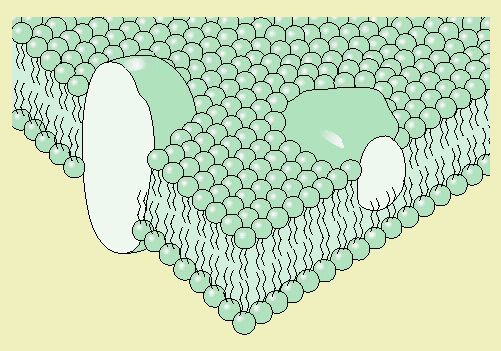Phospholipids
The phosphate group is attracted to water (hydrophilic), where as the other end of fatty acids are not (hydrophobic)- this means that phospholipids will form a layer on water:
 |
| studyblue |
Intrinsic proteins go from one side of the bilayer through to the other. Some are enzymes and others are protein channels which carry substances across the membrane.
Extrinsic proteins are embedded in but do not span the membrane. Some act as structural support; others join with glycolipids to be receptors.
Intrinsic right, extrinsic left:
 |
| kscience |
Carbohydrates
Carbohydrates bond with lipids and proteins to form receptors. The carbohydrate branch acts as a recognition site in glycoproteins, as does the whole glycolipid, to detect chemicals like hormones and toxins.
 |
| malebolge |
.jpg)
Thanks very much for this website, Hannah. It is proving to be very useful.
ReplyDelete